How to Grow Popcorn Seeds: Tips for Growing Popcorn and How to Pop Homegrown Popcorn
I love munching on a big bowl of popcorn in the evening, especially when it’s made from my own garden! Growing corn for popcorn is incredibly rewarding—you can grow popcorn seeds in stunning colors like Dakota Black, Neon Pink, multi-colored Cherokee, or the classic yellow Tom Thumb. One of the most exciting parts of growing popcorn is watching the plants develop and making sure they release pollen at the same time, which is essential for proper pollination and fully formed ears.
The real treat comes when you learn how to pop homegrown popcorn. Once the kernels are properly dried to the ideal moisture content of popcorn—typically around 13 to 14%—the flavor and texture are far superior to anything store-bought. Growing popcorn not only gives you a fresh, delicious snack, but also offers the satisfaction of cultivating your own food from seed to bowl.

Why Grow Your Own Popcorn?
Benefits of homegrown popcorn
Growing your own popcorn offers numerous benefits beyond just the satisfaction of harvesting popcorn from your garden. Unlike sweet corn, popcorn varieties such as Zea mays everta require specific care, like ensuring the soil is moist and weeded regularly.
By planting corn seeds in short rows and choosing the right popcorn kernels, you can achieve great popping quality when the time comes to enjoy your homegrown popcorn.
Properly storing your unshelled corn in airtight containers after the husks are completely dry will keep moisture inside to a minimum, ensuring that your stored popcorn pops perfectly when you’re ready to enjoy it with melted butter.
Nutritional advantages
Growing your own popcorn offers significant nutritional advantages compared to store-bought options. When you plant corn seeds and nurture your own popcorn kernels, you control the process from seed to snack, ensuring no added chemicals or preservatives.
Unlike sweet corn, which is often enjoyed with melted butter, homegrown popcorn can be a healthy, fiber-rich alternative when popped kernels are stored properly and prepared simply.
By managing moisture inside airtight containers and harvesting popcorn when the husks are completely dry, you preserve the natural nutrients, making your homegrown popcorn a wholesome treat. Additionally, eat corn seeds from your harvest or save them for future planting, ensuring a continuous cycle of fresh, healthy popcorn.
Economic and environmental impact
Growing your own popcorn can have a positive economic and environmental impact. By planting corn seeds and managing your popcorn plants in the same garden where you plant sweet corn, you can save money on store-bought popcorn while reducing the environmental cost of transportation and packaging.
Harvesting popcorn from your own corn plants, storing the kernels in airtight containers, and reusing organic waste in your compost pile helps minimize waste and promotes sustainable gardening practices. Additionally, growing popcorn varieties like Zea mays everta allows you to enjoy a tasty treat with minimal impact on the environment, especially when stored properly and prepared with simple ingredients like melted butter.

Understanding Popcorn Varieties
Types of Popcorn Kernels
Popcorn differs from other corns in its unique kernel structure, which allows it to pop, a trait not found in other corns. Among several different varieties, the Butterfly variety has irregular shapes with more surface area, while the Mushroom variety pops into round, compact shapes, ideal for coatings.
For home gardeners who love popcorn, it’s crucial to sow seed directly in soil moist, ensuring good pollination by spacing short rows. After harvest, continue drying the ears for several weeks in a well-ventilated location to avoid stored popcorn fails due to too much moisture.
Selecting the Best Variety for Your Garden
When selecting the best popcorn variety for your garden, consider factors such as climate, soil conditions, and personal preference. For instance, some varieties thrive in warmer climates, while others may require cooler temperatures and well-drained soil to avoid serious stress.
Popular popcorn varieties include Butterfly, known for its light and fluffy popped kernels, and Mushroom, which produces a rounder, denser kernel ideal for holding flavor. Ensure you sow seed directly into well-prepared soil and maintain good pollination practices to prevent issues like stored popcorn failing to pop due to poor kernel quality.

Preparing to Grow Popcorn
Ideal Growing Conditions
To successfully grow popcorn, start by preparing your soil with compost and ensuring it has good drainage. Ideal conditions for planting corn seeds include a sunny location with temperatures consistently between 60-85°F.
When planting, sow the seeds directly into the soil and keep the area well-weeded and regularly watered, but avoid excess moisture to prevent issues with mold or rot. For optimal popping quality, allow the husks to dry completely on the popcorn stalk before harvesting and store the popcorn kernels in airtight containers to maintain freshness.
Choosing the Right Location
When preparing to grow popcorn, select a sunny location that receives full sunlight for most of the day to ensure robust growth and high-quality kernels. Space your corn plants adequately, as planting too close together can hinder proper pollination and reduce yields.
Consider companion planting, and avoid planting other corn varieties like field corn or sweet corn, which can cross-pollinate with popcorn and affect popping quality. Choose varieties like Glass Gem popcorn for unique and vibrant kernels. Regularly weed and maintain soil moisture to support healthy development, and use crop rotation to prevent soil depletion and pest buildup.
Ensure that your soil is well-prepared to help seeds germinate effectively. Maintaining proper spacing and soil conditions will help your popcorn develop shiny kernels and achieve the best quality for popping. If using flour corn for other purposes, make sure it is planted separately to avoid cross-contamination with your popcorn crop.
Sourcing Quality Seeds
To successfully grow popcorn, it is essential to source high-quality seeds from trusted suppliers who offer reliable popcorn varieties like Zea mays everta. Quality seeds ensure better germination rates and stronger corn plants, which are crucial for optimal growth and popping quality.
Poor seed quality can result in weak plants, lower yields, and potential issues with cross-pollination, especially with other corn types. For premium organic corn seeds, including those ideal for growing popcorn, visit our organic popcorn seeds collection to ensure your own popcorn harvest will be successful and produce delicious popped kernels.

Soil and Growing Conditions
- Popcorn should be planted just like other types of corn. Wait until the soil has warmed to 70 degrees and all danger of frost has passed, either in spring or very early summer.
- Depending on the variety, it can take just 60 days or up to 120 days to mature, so if you live in an area with short summers choose a faster maturing variety such as Tom Thumb, and make sure you plant early enough to harvest before your first frost.
- If you need to plant earlier than your season normally allows, warm up your soil in advance by using black plastic mulch, and protect your seedlings with floating row covers until the weather is mild enough for the corn to survive unprotected.
- It is best to sow your popcorn seeds directly in the garden as corn does not transplant well.
- Test your soil to see if any fertilization is required. Popcorn is a “heavy feeder” and needs plenty of nitrogen and other nutrients to thrive.
- Spread an inch of compost over the bed and incorporate it with the soil.
- Plant the seeds at 1 inch depth, spaced at every 8 inches both within and in between rows.
- Water well, and a week or two later you should see sprouts popping up.
Tips to Growing Great Popcorn
- Corn has very shallow roots and needs good loose soil without rocks or other debris in the way. Pull any weeds before you plant. Once the seeds are in the ground, don’t weed your garden until the corn is several inches tall because the sprouts look like grass and you might pull it along with the weeds!
- Corn needs close contact with other corn in order to self-pollinate efficiently and produce good cobs, so it is best to dedicate an entire bed to your popcorn instead of intercropping them with other veggies. If you only want to plant a partial bed, do so in a block-arrangement, not in rows, for the best pollination.
- Keep your corn patch watered and weed free throughout the growing season.
- Fertilize mid-season with a high nitrogen liquid fertilizer such as Blood Meal.
- When the corn stalks are knee high, mound up some extra dirt or compost around the base of each stalk to help stabilize them and to cover any exposed roots.

Harvesting Your Popcorn
- Your popcorn will be ready to harvest when the husks have dried and the kernels are plump, well-colored and shiny.
- Remove the husks and dry the cobs fully in a cool, well-ventilated place for at least a month.
- Your kernels will not pop if they are too moist.
- Test if they’re ready by shelling and attempting to pop several kernels; if they don’t pop or if the popped corn is chewy or jagged, try again after several more days of drying.
- Remove the kernels from the cobs once they’re fully dry. A hand corn sheller makes this task easy.
- Pick out any pieces of husk or silks from the stored corn kernels - these will burn if it is included when popping the corn.
- Store the kernels in an air-tight container until you’re ready to pop them, preferably in the refrigerator to keep them as fresh and bug-free as possible. If stored well, they should retain their popping quality for several years.

Popping Your Popcorn
To pop your homegrown popcorn, you can use an air popper or pop them on the stovetop. The best method for stovetop popping has been thoroughly studied and perfected by America’s Test Kitchen. Here’s how they do it:
- In a large saucepan, heat 3 Tablespoons of high smoke point oil, such as peanut or canola, on medium.
- Add only three kernels and cover.
- When the third kernel pops, it’s hot enough to add the rest of the popcorn.
- Remove the pot from the stove, pour in 1/3 cup of kernels, and cover again. Wait 30 seconds and then return the pot to heat.
- Once you hear them start to pop, shake the pot over the heat, and also crack the lid just a little so the steam can escape and not make them soggy - but not enough for a popped kernel to escape!
- When the popping slows down to every 1 or 2 seconds, remove from heat and pour in a bowl.

The Best Way to Pop Your Homegrown Popcorn
Different Popping Methods
For home gardeners looking to pop their own homegrown popcorn, it's essential to test a few kernels to ensure they are properly dried; stored popcorn fails to pop if the husks are not completely dry. While air poppers and stove-top popping methods can both yield tasty results, microwaving may struggle if the kernels have too much moisture or if the popcorn was not well ventilated during drying.
For the best outcome, make sure to harvest ears from well-pollinated plants, test pop kernels at frequent intervals, and store them in rodent-proof, mesh bags in a sunny window or a dry, well-ventilated location to prevent high relative humidity from reducing yields.
Troubleshooting Common Popping Issues
To troubleshoot why your homegrown popcorn kernels may not pop, first test a few kernels to ensure they are adequately dried; kernels with too much moisture or those stored improperly can lead to stored popcorn fails.
To avoid burnt popcorn and improve texture, make sure to pop kernels at frequent intervals and in a well-ventilated, rodent-proof location. Properly harvested and dried popcorn, with husks completely dry, will help ensure your popcorn is tasting good and free from issues.

Ideas on Toppings for Your Popcorn
Butter and salt is always a crowd pleaser, but why not try making your own gourmet toppings? Travel the world in your kitchen: make it Japanese-style with chili powder and crumbled dried seaweed, Hawaiian-style with butter and furikake (a Japanese seasoning) mixed with little rice crackers, or coat half with cheddar powder and half with caramel then toss them together for Chicago-style popcorn.
Drizzle with caramel, dark and white chocolate to make zebra popcorn, or try out your favorite seasonings from the spice cabinet like cinnamon-sugar, sriracha, curry powder, wasabi, or nutritional yeast. And of course there are many delicious recipes online for other goodies you can make from popcorn too. Grow your own popcorn to enjoy all year, create your own signature flavor, and grow organic for life!
Conclusion
Growing corn for popcorn can be a rewarding experience, offering not only a delicious treat but also a way to practice sustainable gardening. To get started, growing popcorn begins with planting seeds an inch deep in well-prepared soil and selecting a variety that suits your preferences—whether robust yellow kernels or vibrant Glass Gem types. For healthy ears, ensure your plants release pollen at the same time to promote full pollination.
A key to success in growing popcorn is allowing the ears to fully mature and the silks to dry before harvest. For the best popping results, dry the kernels until the moisture content of popcorn reaches around 13–14%. This level ensures optimal popping and great texture.
Wondering how to pop homegrown popcorn? Once properly dried and stored, your homegrown popcorn offers a fresher, more flavorful snack than store-bought versions. During the growing season, provide about an inch of water weekly to support strong development. With the right care and popping method, you’ll enjoy a satisfying, wholesome snack—grown right in your own backyard.
Whether you choose classic butter and salt or get creative with gourmet toppings, your homegrown popcorn will provide a fresh and flavorful snack throughout the year. To get started, check out our corn seeds for sale. Popcorn growers will appreciate the rewards of their harvest, which can be enjoyed all year long. Plus, popcorn is a healthier snack choice, offering fewer calories than half a medium bag of chips. Even with a topping of bran flakes or whole wheat toast, it remains a nutritious option. Happy popping!
FAQs about The Complete Guide to Growing Popcorn: How to Grow Popcorn Seeds and Pop Homegrown Popcorn
-
How do I know when my popcorn is ready to harvest?
-
To determine if your popcorn is ready for a successful harvest, ensure that the husks are completely dry and the kernels are plump and shiny. Test a few kernels by attempting to pop them; if they do not pop or are chewy, continue drying the ears from silk in a well-ventilated location for several weeks.
-
-
Why might my stored popcorn fail to pop?
-
Stored popcorn may fail to pop due to excess moisture. Ensure kernels are properly dried before storage. Place the popcorn in airtight containers and keep them in a dry, sunny window or another well-ventilated location to avoid high relative humidity. Moisture can affect the popping quality, so it’s important to store popcorn correctly.
-
-
How can I avoid cross-pollination and ensure good pollination for my popcorn?
-
To prevent cross-pollination with other types of corn and ensure good pollination, sow seeds directly in short rows and maintain proper spacing of two inches apart. Regularly weed the area to remove wild grass and monitor both male and female flowers. Popcorn is wind-pollinated and requires close contact with other plants to pollinate effectively. Growing popcorn with proper spacing helps in achieving the best results.
-
-
What should I do if my popcorn kernels have too much moisture?
-
If your kernels have too much moisture, they may not pop properly. Continue drying the ears in a well-ventilated location for several weeks. Test kernels at frequent intervals to ensure they reach the correct moisture level before storing popcorn. Corn dry conditions are essential for maintaining quality.
-
-
How can I improve the texture and flavor of my popped popcorn?
-
To enhance texture and flavor, test pop a few kernels and use a method that suits your preference, such as stovetop popping or an air popper. Add seasonings like caramel corn, butter, or herbs after popping. Avoid overheating or burning to ensure your popcorn tastes great. You can also experiment with different types of corn for unique flavors.
-
-
What are some common issues home gardeners might face when growing popcorn?
-
Common issues include improper drying, which leads to stored popcorn failing to pop, and high relative humidity affecting kernel quality. Additionally, failing to weed plants regularly and manage pests can result in stress and reduced yields. Ensure proper drying of husks, avoid excess moisture, and manage soil conditions. Using well rotted manure and side dressing can help maintain soil health.
-
-
How do I store my popcorn kernels after harvesting?
-
After harvesting, remove the kernels from the ears and store popcorn in airtight containers. Choose a storage location that is cool, dry, and rodent-proof to preserve popping quality. Keeping the kernels in a sunny window or a well-ventilated area helps maintain freshness.
-
-
Can I grow different varieties of popcorn together?
-
Yes, but be cautious of cross-pollination. Growing several different varieties of popcorn in close proximity can affect popping quality. To avoid this, consider planting varieties with sufficient spacing or in separate areas to reduce the risk of cross-pollination.
-
-
When is the best time to plant popcorn?
-
The best time to plant popcorn is in early spring after the last frost date. Ensure the soil temperature is warm enough for seed germinate. Plant seeds one inch deep and about foot tall apart to give each plant ample space to grow.
-
-
How should I care for popcorn plants during the growing season?
-
Care for popcorn plants by ensuring they receive adequate water and nutrients. Use side dress techniques with compost or well rotted manure to nourish the soil. Keep the area weed-free to prevent competition for nutrients and moisture.
-
-
What is the process of growing popcorn?
-
How to grow popcorn involves several key steps: plant corn seeds in early spring, ensure proper spacing of two inches apart, and provide adequate water and nutrients throughout the growing season. Manage pests and weeds, and ensure the plants reach full maturity before harvesting.
-
-
What should I do with popcorn plants after harvesting?
-
After harvesting, remove the kernels and prepare them for storage. You can use the ears for fall decorations or compost them to enrich the soil. Make sure to save seed from robust, healthy plants if you wish to grow popcorn again next season.
-
-
How can I use popcorn as decorations?
-
Popcorn can be used in fall decorations such as garlands or wreaths. Simply thread popped kernels onto string or wire to create festive decorations for the season.
-

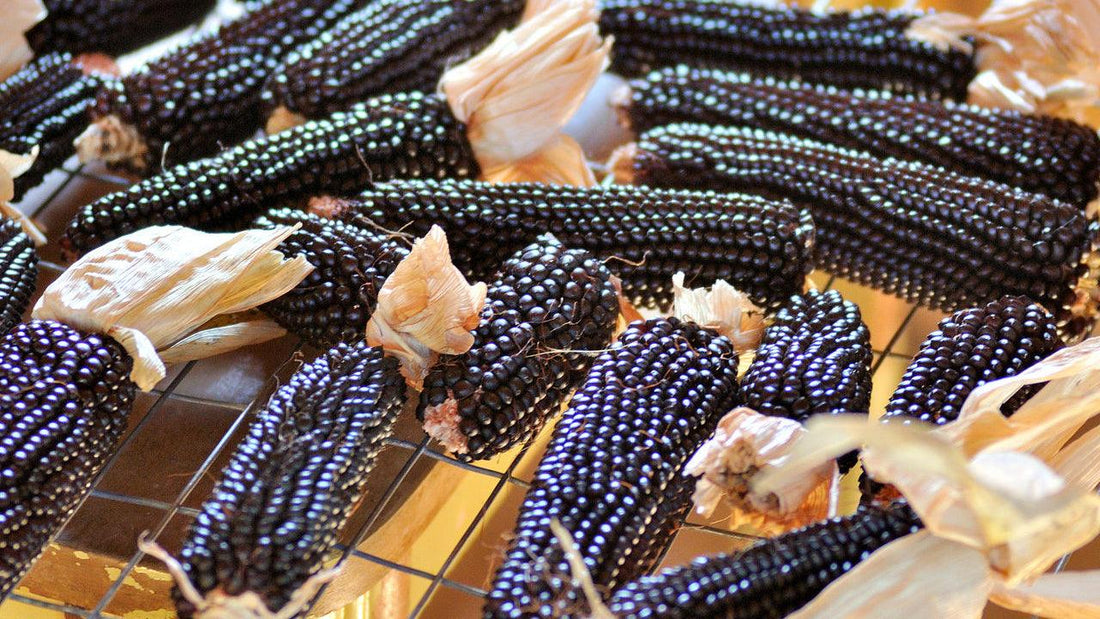

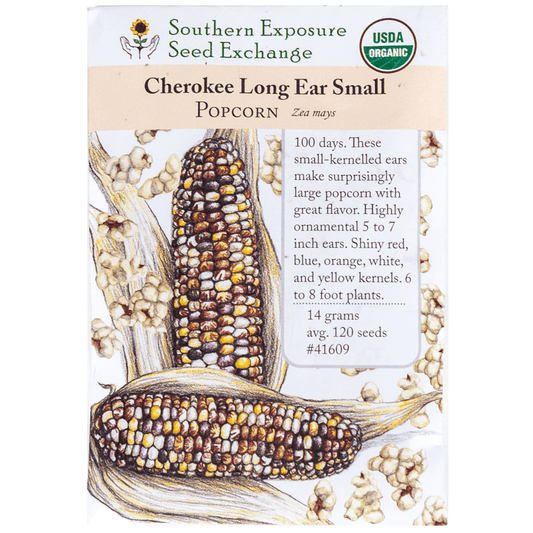
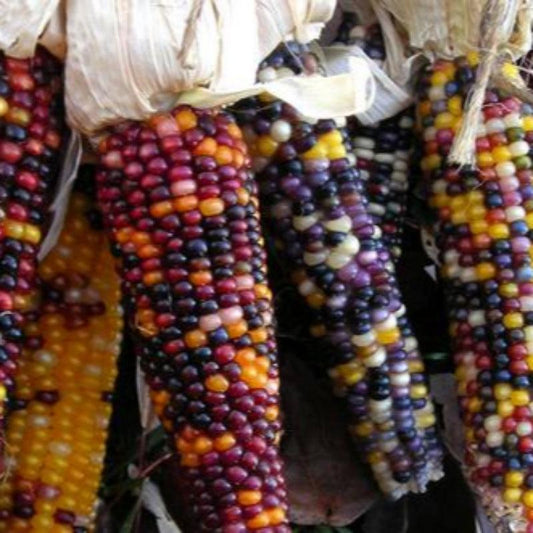
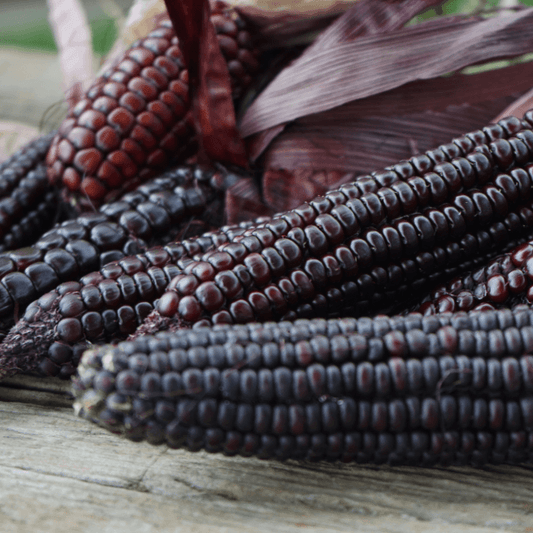
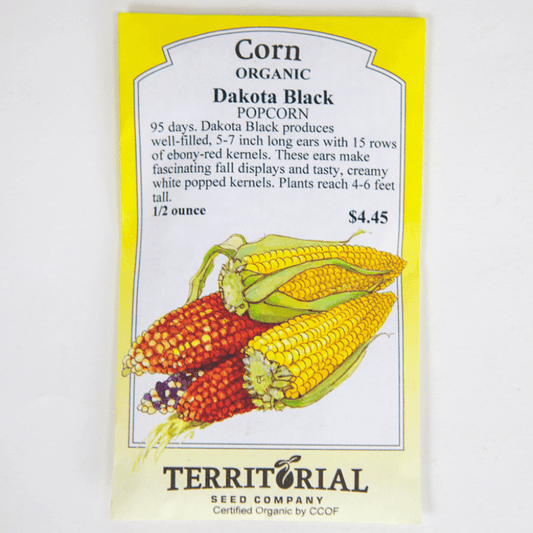
8 comments
How do you measure the % of moisture in a popcorn
Gigi, thanks for the tip on popping.
Alton Brown has an excellent tip about popping on the stove. Use a 6 quart stainless bowl, and cover with foil. Put 10 slots into the foil with a knife to allow steam to escape. Cook over medium heat using tongs or BBQ mitts, to gently shake to bowl constantly, with the oil, popcorn and 1/2 tsp popcorn salt, (very fine grained salt) . It will take about 3 mins for the batch to finish.
The curved bowl is the perfect shape to lift the popped kernels away from the oil and heat, while keeping the unpopped kernels close to the heat so more will pop. The slots in the foil help keep the popped corn from getting soggy from the steam trapped under a regular lid.
I have found this one of the most economical ways to make popcorn. Better than any of the poppers I’ve tried, actually.